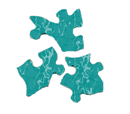
Problem Classification Scheme
The Problem Classification Scheme provides a structure, terms, and system of cues and clues for a standardized assessment of individuals, families, and communities. It helps practitioners collect, sort, document, classify, analyze, retrieve, and communicate health-related needs and strengths. It is a comprehensive, orderly, non-exhaustive, mutually exclusive taxonomy or hierarchy. The Problem Classification Scheme consists of four levels of abstraction. Four domains appear at the first or most general level. Forty-two client problems or areas of concern are at the second level; by definition, problems are neutral, not negative. The third level consists of two sets of problem modifiers: health promotion, potential, and actual as well as individual, family, and community. Clusters of signs and symptoms that describe actual problems are at the fourth or most specific level. Using the Problem Classification Scheme with the Intervention Scheme and Problem Rating Scale for Outcomes creates a comprehensive problem-solving model for practice, education, and research.
The case studies on the Website illustrate how to apply the Problem Classification Scheme. The entire Problem Classification Scheme, more instructions and guidelines for use, and additional case studies appear in the 2005 book.
Domains and Problems of the Problem Classification Scheme
Environmental Domain: Material resources and physical surroundings both inside and outside the living area, neighborhood, and broader community.
Income
Sanitation
Residence
Neighborhood/workplace safety
Psychosocial Domain: Patterns of behavior, emotion, communication, relationships, and development.
Communication with community resources
Social contact
Role change
Interpersonal relationship
Spirituality
Grief
Mental health
Sexuality
Caretaking/parenting
Neglect
Abuse
Growth and development
Physiological Domain: Functions and processes that maintain life.
Hearing
Vision
Speech and language
Oral health
Cognition
Pain
Consciousness
Skin
Neuro-musculo-skeletal function
Respiration
Circulation
Digestion-hydration
Bowel function
Urinary function
Reproductive function
Pregnancy
Postpartum
Communicable/infectious condition
Health-related Behaviors Domain: Patterns of activity that maintain or promote wellness, promote recovery, and decrease the risk of disease.
Nutrition
Sleep and rest patterns
Physical activity
Personal care
Substance use
Family planning
Health care supervision
Medication regimen
